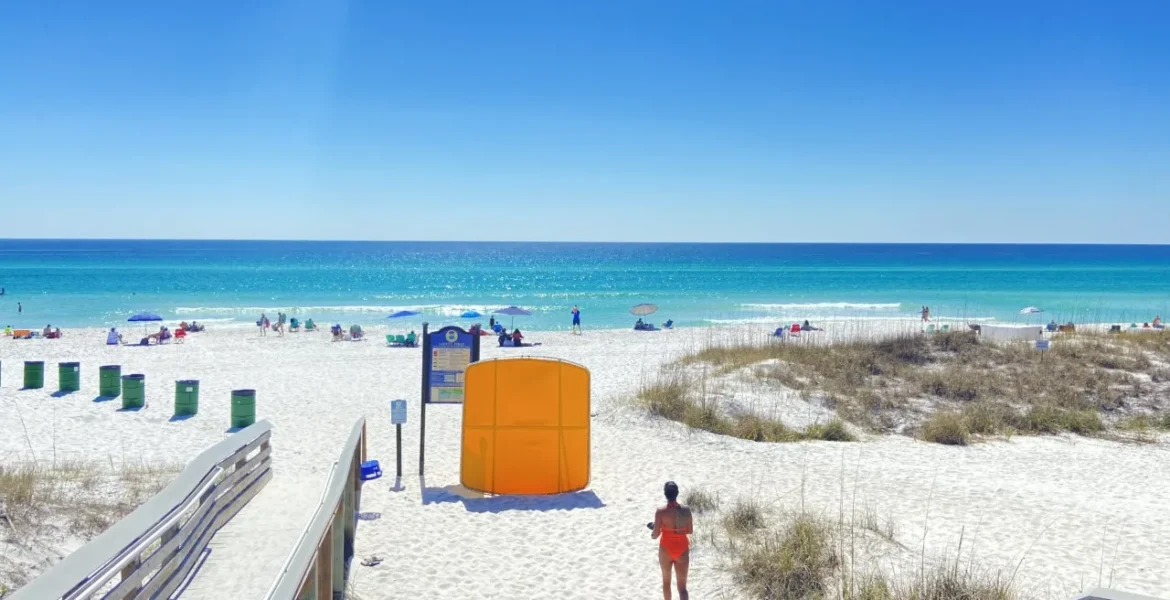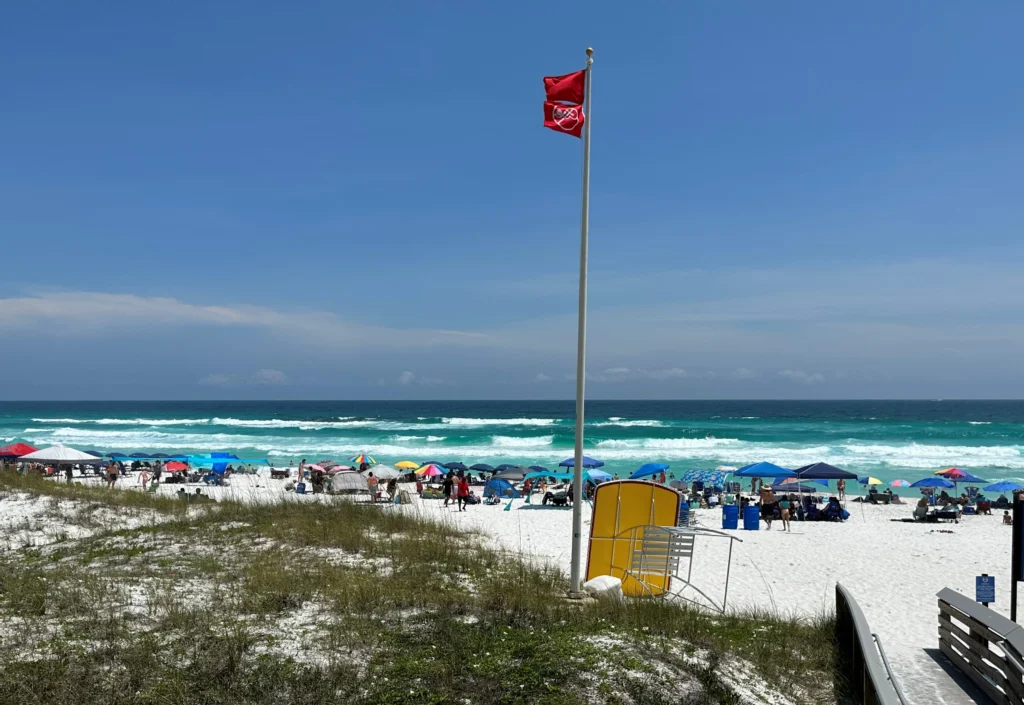
Panama City Beach Drownings: A Comprehensive Overview
Introduction
Panama City Beach Drownings: Panama City Beach, with its stunning white sands and crystal-clear waters, is a popular destination for tourists and locals alike. However, beneath its beauty lies a hidden danger: the risk of drowning. Understanding the causes and preventive measures associated with drownings at Panama City Beach is crucial for ensuring a safe and enjoyable experience for everyone.
History of Drownings at Panama City Beach
Panama City Beach has seen its share of tragic drownings over the years. These incidents often make headlines, highlighting the need for greater awareness and safety measures. Historical data shows that drownings tend to spike during peak tourist seasons, when the beaches are crowded, and many visitors are unfamiliar with the local water conditions.
Understanding Rip Currents
What Are Rip Currents?
Panama City Beach Drownings: Rip currents are powerful, narrow channels of fast-moving water that can quickly pull swimmers away from the shore. They are one of the leading causes of drownings at Panama City Beach.
How to Identify Rip Currents
Panama City Beach Drownings: Recognizing rip currents is essential for safety. Look for areas where waves are not breaking, water that appears darker or murkier, or channels of choppy water moving away from the shore.
Safety Tips to Avoid Rip Currents
Panama City Beach Drownings: To stay safe, swim near lifeguards, avoid swimming alone, and pay attention to beach warning flags. If caught in a rip current, remain calm, float, and swim parallel to the shore to escape the current’s pull.

Beach Safety Measures
Lifeguard Services
Lifeguards play a vital role in preventing drownings. They are trained to identify dangerous conditions and respond quickly to emergencies. Always swim in areas patrolled by lifeguards.
Beach Warning Flags
Panama City Beach Drownings: Panama City Beach uses a flag system to indicate water conditions. Green flags mean low hazard, yellow flags indicate moderate surf and currents, red flags signify high hazard, and double red flags mean the water is closed to the public.
Public Safety Campaigns
Public safety campaigns aim to educate beachgoers about potential hazards and promote safe swimming practices. These initiatives include distributing informational brochures, conducting safety workshops, and using social media to spread awareness.
Common Causes of Drownings
Rip Currents
Panama City Beach Drownings: As previously mentioned, rip currents are a primary cause of drownings. Their strength and unpredictability can catch even experienced swimmers off guard.
Alcohol Consumption
Alcohol impairs judgment and coordination, increasing the risk of drowning. Many drowning incidents involve individuals who were under the influence of alcohol.
Lack of Swimming Skills
Panama City Beach Drownings: A significant number of drowning victims lack adequate swimming skills. Ensuring that all beachgoers have basic swimming knowledge can drastically reduce drowning incidents.
Impact on the Community
Emotional Toll on Families
Drownings leave a lasting emotional impact on the families and friends of victims. The sudden loss and the nature of the incident can be particularly devastating.
Economic Impact on Tourism
Panama City Beach Drownings: Drowning incidents can negatively affect tourism, as potential visitors may perceive the beach as unsafe. This can lead to a decline in local business revenue.
Community Responses and Initiatives
The Panama City Beach community often comes together to support affected families and advocate for better safety measures. Initiatives include fundraising for safety equipment and organizing memorial events.
Personal Stories
Testimonials from Survivors
Panama City Beach Drownings: Survivors of near-drowning incidents often share their stories to raise awareness and promote safety. Their experiences highlight the importance of vigilance and preparedness.
Accounts from Families of Victims
Families of drowning victims also share their stories to honor their loved ones and emphasize the need for improved safety measures. These personal accounts are powerful reminders of the human cost of drownings.
Preventive Measures
Educational Programs
Educational programs teach beachgoers about the risks and safety practices associated with swimming in the ocean. These programs are often run by local authorities and community organizations.
Water Safety Courses
Panama City Beach Drownings: Water safety courses provide hands-on training in swimming and emergency response. They are especially beneficial for children and inexperienced swimmers.
Importance of Life Jackets
Wearing life jackets can prevent drownings, particularly for those who are not strong swimmers. It’s important to use life jackets that are properly fitted and approved by safety standards.
Role of Local Authorities
Efforts by Panama City Beach Authorities
Local authorities have implemented various measures to enhance beach safety, including increasing lifeguard presence, improving warning systems, and conducting regular safety audits.
Collaboration with Organizations
Panama City Beach Drownings: Panama City Beach authorities collaborate with organizations like the Red Cross and local nonprofits to promote water safety and provide resources for beachgoers.
Technological Advancements in Beach Safety
Drones and Surveillance
Drones equipped with cameras are used to monitor beach conditions and identify potential hazards. They provide real-time data that can be used to prevent incidents.
Advanced Warning Systems
Panama City Beach Drownings: Advanced warning systems use technology to detect rip currents and other dangers. These systems can alert lifeguards and beachgoers to take precautionary measures.
What to Do in Case of a Drowning Incident
Immediate Steps to Take
If you witness a drowning incident, call for help immediately. Do not attempt to rescue the person unless you are trained to do so, as this can put you at risk.
How to Perform CPR
Knowing how to perform CPR can save lives. CPR involves chest compressions and rescue breaths to maintain circulation and breathing until emergency services arrive.
Contacting Emergency Services
Always contact emergency services as soon as possible in the event of a drowning. Provide them with detailed information about the location and condition of the victim.
Tourist Information
Tips for Visitors
Visitors to Panama City Beach should always swim near lifeguards, heed warning flags, and avoid alcohol while swimming. It’s also advisable to stay informed about local water conditions.
Safe Swimming Locations
Some areas of Panama City Beach are safer for swimming than others. Ask local authorities or lifeguards for recommendations on where to swim.
Resources and Contacts for Help
Keep a list of emergency contacts, including local authorities and nearby hospitals. Familiarize yourself with the locations of lifeguard stations and emergency equipment.
Conclusion
Drownings at Panama City Beach are a serious concern, but with proper awareness and safety measures, many incidents can be prevented. By understanding the risks, following safety guidelines, and staying informed, beachgoers can enjoy the beauty of Panama City Beach while staying safe.
FAQs
How can I stay safe at Panama City Beach?
Stay near lifeguards, heed warning flags, avoid alcohol while swimming, and be aware of rip currents.
What should I do if I see someone drowning?
Call for help immediately, and if trained, provide assistance. Do not attempt a rescue unless you are confident in your abilities.
Are there enough lifeguards at Panama City Beach?
Efforts are continuously made to ensure adequate lifeguard coverage, especially during peak seasons. However, always check the presence of lifeguards before swimming.
How can I identify a rip current?
Look for differences in water color, wave patterns, and channels of moving water. Avoid these areas if you spot any signs of a rip current.
What is the best time to swim at Panama City Beach?
The safest times to swim are during daylight hours when lifeguards are on duty and water conditions are favorable, as indicated by green or yellow flags.

Leave a Reply